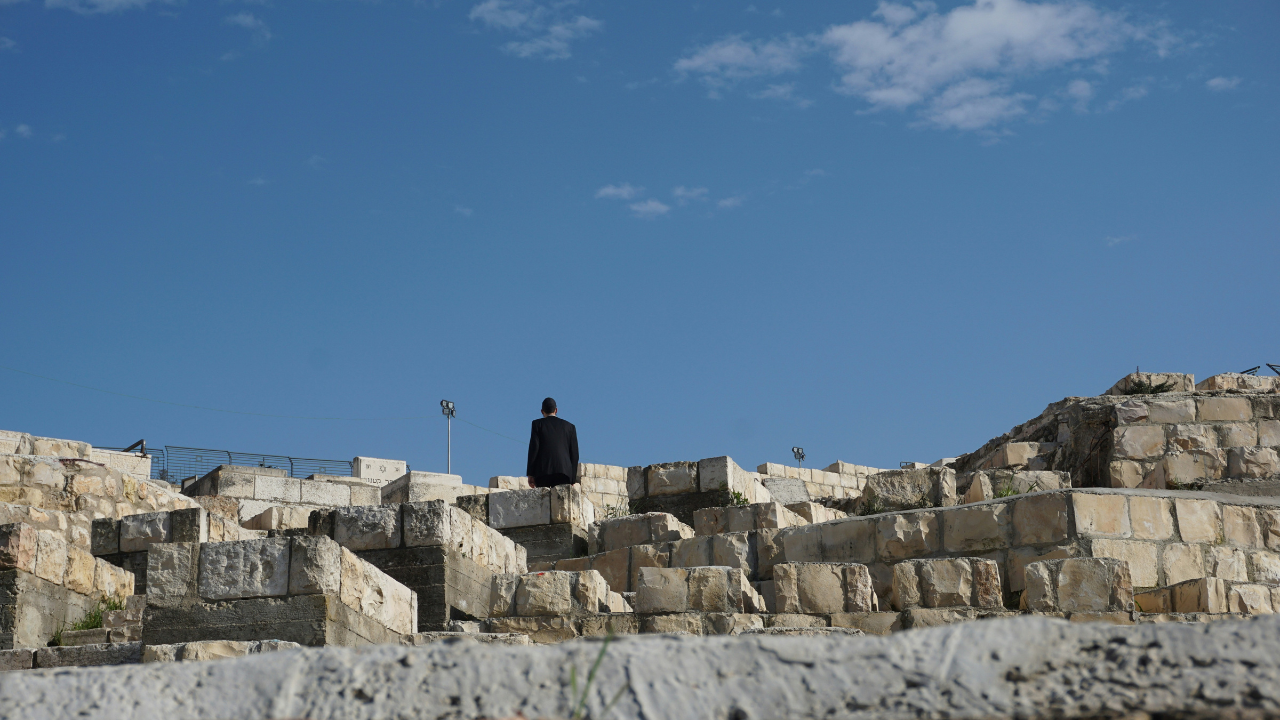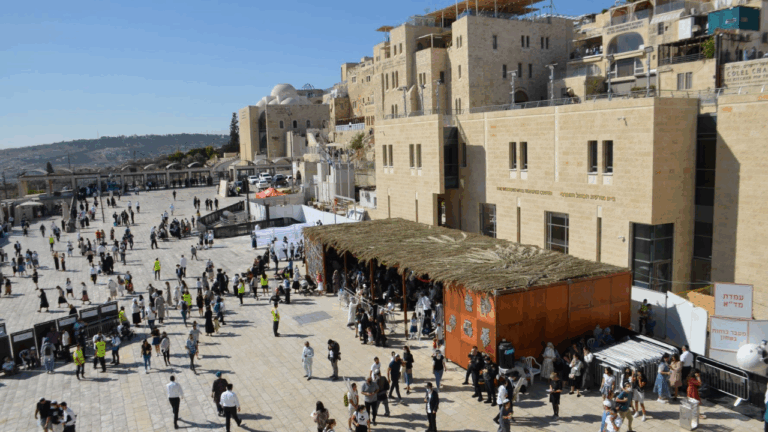Where Death Yields to Life: Har HaZeitim as the Refuge of Purity
The complex process of Parah Adumah involved many halachik steps. Beyond its intricacy, every stage had to be conducted in a state of total purity. If someone who was tamei handled the ashes of the red heifer, the ashes would lose their power to purify. To prevent this, Chazal painstakingly enacted numerous safeguards to ensure the purity of both the ashes and the water in which they were mixed.
For example, when drawing this water, Chazal arranged for children who were born in elevated homes built over hollow caves, so it would be certain that they had never been exposed to tumah. (The caves served as an interposing ohel:if there was a corpse below, the impurity could not ascend into the living space.) To reach the stream of water, these children were transported atop doors laid on large oxen, again to avoid any contact with impurity from possible graves beneath the earth.
For all of these valiant efforts, however, there is a striking irony. The Parah Adumah can only be slaughtered and burned outside the Har HaBayit. The red heifer was taken to the east of the Beit HaMikdash and slaughtered on Har HaZeitim, known in the language of Chazal as the Har HaMishcha. There, on the Mount of Olives, the animalwas burned and the ashes were collected. But this entire process did not take place on an elevated platform; there were no interposing caves underneath. What happened to all our concerns about hidden sources of impurity?
While the rest of the world always has the possibility of tumah beneath, Har HaZeitim was uniquely and absolutely pure. Chazal note that during the Mabul, the cataclysmic flood that destroyed the world and spread countless corpses, Har HaZeitim remained unsubmerged. This is why the dove was able to pluck an olive branch from this mountain so closely associated with olives (Bereishit Rabbah 33:6). Indeed, Har HaZeitim was considered so safe from impuritythat it was also chosen as one of the three special locations designated for storing the ashes of the Parah Adumah (Mishna Parah 3:11).
This is quite ironic. Although the modern Har HaZeitim is home to one of the oldest and most prominent Jewish cemeteries in the world, in the times of Chazal it was completely free of any tumah.
Beneath this technical analysis is a profound spiritual property of Har HaZeitim. This mountain is a source of purity in a world so often marked by the confusion of death and destruction. When the world was decimated by the flood, it was from this place that the olive branch – the ultimate symbol of peace and renewal – was retrieved. Olives provide oil for illumination; when the world is shrouded in darkness, they bring light. Generations later, when a person became tamei through contact with death, there was only one place which could guarantee a safe path back to purity. As a bastion of taharah itself, Har HaZeitim was used both to procure and safeguard the ashes of Parah Adumah.
To no surprise, Chazal seem to indicate that Techiyat HaMeitim will begin at Har HaZeitim (see Targum Yonatan to Shir HaShirim 8:5, Teshuvat HaRadvaz 8:197, and Mishne Halachot 17:254). Not only does this mountain provide purification for those rendered impure by death; it will also be the first place to reverse the pain and confusion of death and restore eternal life. Har HaZeitim stands directly opposite the heichal of the Beit HaMikdash, aligned with the very spot where Adam HaRishon was first formed. The Har HaBayit was the heavenly conduit through which Adam’s soul entered his body. So too, it will be the conduit through which the souls of the departed will return to this world.
Even in our time, when Har HaZeitim has become a place of burial, its legacy remains. One day, it will be the first to illuminate the darkness of exile, and death itself will yield to the light of eternal life.



